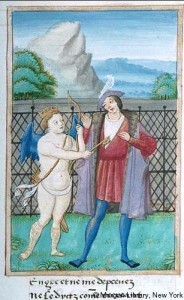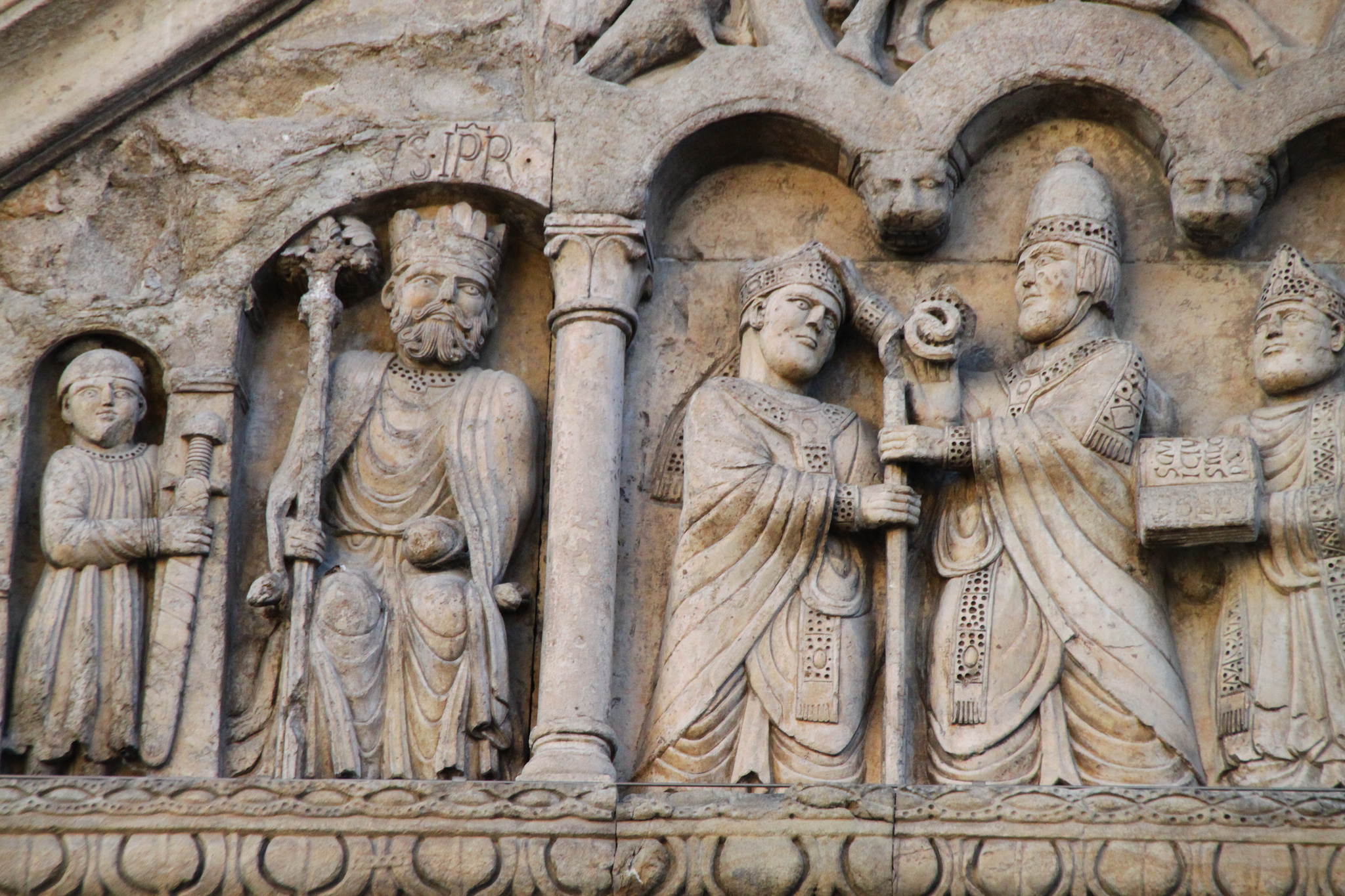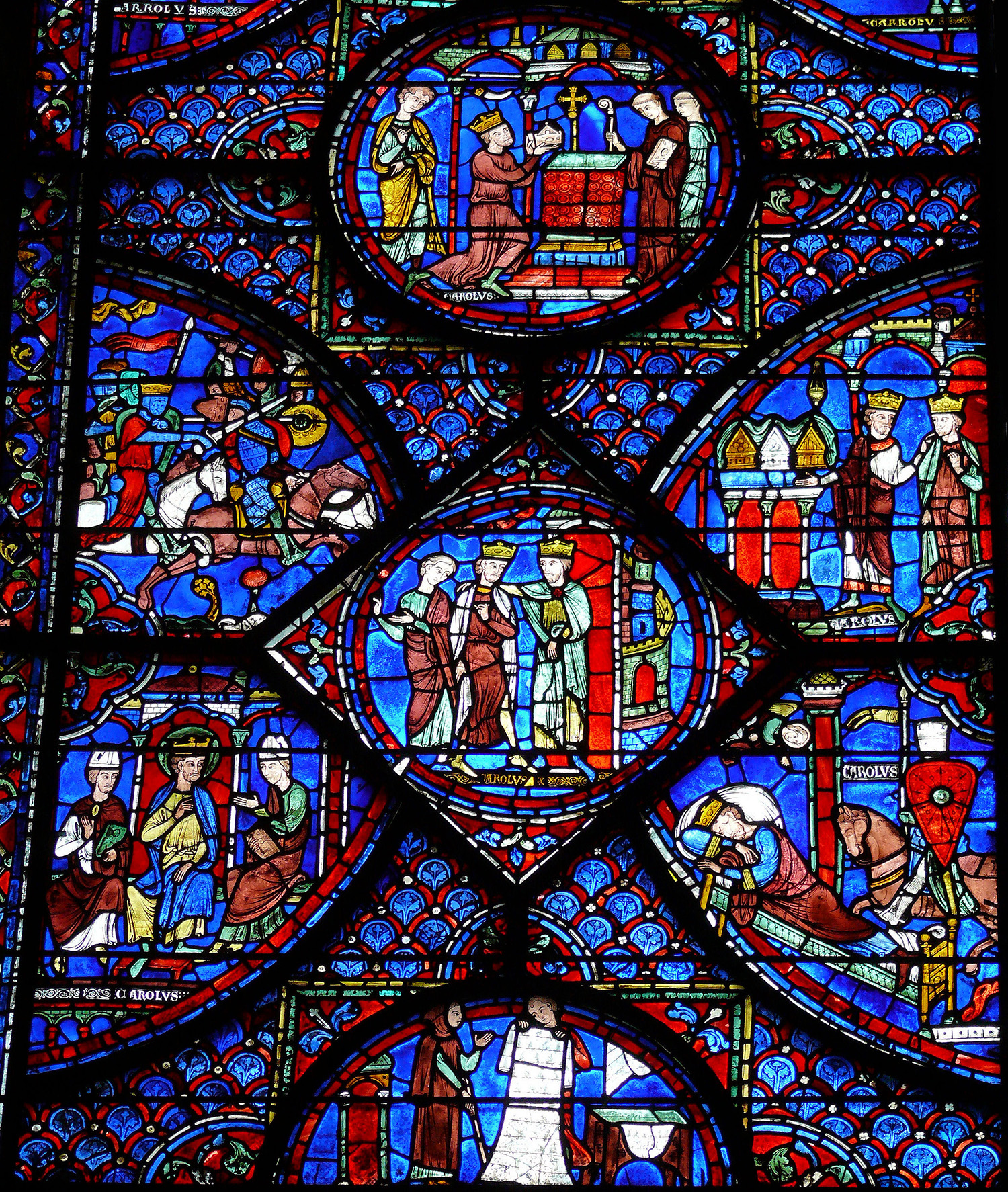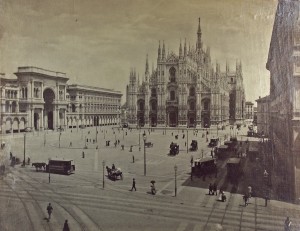

As you may know, the Index of Christian Art is in the midst of a major and long-awaited redesign aimed at making our online database more flexible, accessible, and user-friendly. Please help us by taking a very brief (5-10 minutes) survey about your use of the current database. Your responses will help refine the new design with our researchers’ needs in mind. You can access the link here.
All responses will remain anonymous, and all will be valuable in helping us to design a new database that will better serve you and all researchers whose work concerns the history and signification of images in the Middle Ages.
Thank you very much for your support of our work.
Celebrated annually on February 14 as a day for courtship and romance, Valentine’s Day began as a liturgical celebration in honor of one or more Early Christian martyrs named Valentinus. The Roman Martyrology mentions two Valentines, both of whom were decapitated on the ancient Via Flaminia, the main artery connecting the city of Rome to the Adriatic Sea. One Valentine died in Rome and seems to have been a priest. The other, who may have been a bishop, was martyred approximately 60 miles away at Interamna (modern Terni).

The earliest extant connection between Valentine’s Day and romantic love appears in Geoffrey Chaucer’s Parlement of Foules (1383): “For this was on St. Valentine’s Day, when every bird cometh there to choose his mate.” February 14 was associated with courtly love as early as 1400, in a charter ostensibly issued by Charles VI of France (d. 1422). The text describes the festivities of the royal court, which included love poetry competitions, dancing, jousting, and a feast. Contrary to popular belief, there is no firm evidence linking Valentine’s Day with the ancient Roman Lupercalia, a pastoral festival observed from February 13 through 15 to purify the city of Rome and to promote health and fertility.

The Index of Christian Art is delighted to present four images thematically associated with Valentine’s Day. First, the nimbed Valentine of Rome is represented with the sword of his martyrdom in the fifteenth-century Hours of Catherine of Cleves (Morgan Library, M.917 and M.945). Second, a sixteenth-century Roman de la Rose contains a charming depiction of the God of Love locking the Lover’s heart with a giant key (Morgan Library, M.948). Third, a fourteenth-century ivory box cover of Parisian origin shows women defending the castle of love, a popular subject in late medieval courtly circles. The winged god of love at the top of the roundel prepares to launch his arrow, while women throw flowers at the attacking knights. Last, a sixteenth-century drawing from an Arma Christi and Prayers (Princeton University Library, Taylor 17), which portrays Christ’s heart with three blossoming flowers, is inscribed pyte, love, and charyte.
“Plus Ça Change…? The Lives and Afterlives of Medieval Iconography” takes place on April 29 at the Index of Christian Art. Presentations include:
“Rejection, Distortion and Destruction at Santa Maria in Trastevere.”
Dale Kinney, Professor of History of Art Emeritus, Bryn Mawr College
“The Archaeology of Carolingian Memory at Saint-Sernin of Toulouse.”
Catherine Fernandez, Research Scholar, Index of Christian Art, Princeton University
“How Reliquaries Resist Iconographic Classification But Still Have Meaning”
Cynthia Hahn, Professor, Hunter College and CUNY Graduate Center
“Signatures and Traces in the Art of al-Andalus.”
D. Fairchild Ruggles, Professor, University of Illinois at Urbana-Champaign
“Debating the Transfiguration In Fourteenth-Century Byzantium; or Why There Is No Hesychastic Art.”
Charles Barber, Professor, Princeton University
“The Frailty of Eyes.”
Kirk Ambrose, Professor and Chair, University of Colorado, Boulder
“Figuring Absence: Iconography and the Failure of Representation.”
Elina Gertsman, Associate Professor, Case Western Reserve University
“The Work of Gothic Sculpture in the Age of Mechanical Reproduction.”
Jacqueline Jung, Associate Professor, Yale University
Generously co-sponsored by the Seeger Center for Hellenic Studies, Princeton Medieval Studies, Princeton Art & Archaeology, and the Steward Fund in the Council of the Humanities, Princeton University. We look forward to seeing you!



Today marks the feast day of Saint Charlemagne. The Frankish leader was canonized by the antipope Paschal III in 1165, some three-and-a-half centuries after his death on January 28, 814. Political motivations assuredly played a role in this act given the pontiff’s desire to curry favor with Charlemagne’s successor, Emperor Frederick Barbarossa. Yet it is well worth remembering that distinctly local commemorations of the emperor had already been established throughout the original footprint of the Carolingian empire.

Although Paschal III’s ordinances were officially revoked during the Third Lateran Council in 1179, Charlemagne remained a figure of veneration, particularly in the cathedral of Aachen, which houses an elaborate thirteenth-century shrine containing his relics. On Karlstag, the twelfth-century liturgical chant Urbs Aquensis, urbs regalis is performed within the cathedral in celebration of the emperor’s memory. With its vivid language, the sequence evokes Charlemagne’s accomplishments by describing him as a soldier of Christ, just ruler, converter of infidels, and an all-around rex mundi triumphator. Such descriptors complement posthumous medieval depictions of the emperor, which are amply represented in the Index’s catalogue. Portrayed variously as a ruler, warrior, patron, and saint in different media, these figures of Charlemagne underscore the diversity of guises and legends that developed after the historical emperor’s death.

Places of Power
The Index of Christian Art announces an exhibition of rare photographs of important monumental sculpture entitled Places of Power. On display will be a selection of photographs of significant places in major European cities, including two pre-1900 views of L’Arc de Triomphe and the façade of the Pavillon Sully wing of the Louvre Museum in Paris, a rare image of the piazza del duomo in Milan taken before 1896, twenty postcard views of Strasbourg Cathedral dating to the 1920s, and a large mounted study photograph of the twelfth-century Last Judgment scene on the tympanum of St. Foy at Conques, France, a key stop for pilgrims traveling to Santiago de Compostela in northern Spain.
The photographs will be on display through March as part of the Index’s rotating exhibition program.